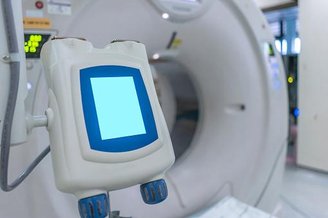Researchers at the University of Science and Technology of China have used a special property of atomic particles known as “dark spins” to amplify very weak magnetic fields in an unprecedented way. The technique amplified the magnetic field signal up to 5 thousand times with a very high sensitivity of 0.1 femtotesla (fT), that is, one billionth of a Tesla (T)..
The study, published in the Proceedings of the National Academy of Sciences, promises to revolutionize many fields, from fundamental physics and materials science to biomedical science. This is because weak magnetic fields are present in many everyday things, such as the functioning of the brain and the behavior of exotic materials.
Although quantum amplification is considered an effective way to measure weak electromagnetic fields, the technique is normally limited to the manipulation of gaseous atoms, such as preparation of spins, coherence time (preservation of quantum information) and signal reading precision.
How did scientists develop methods for processing gaseous atoms?
To overcome the limitations of existing techniques, the authors proposed a new magnetic amplification concept. “Using dark noble gas nuclear spins in the absence of bomb light”that is, polarization performed by a high-frequency laser. The traditional technique uses a mixed system of gaseous xenon atoms and metallic rubidium atoms.
However, unlike those experiments, which used xenon atoms to amplify and laser-polarized rubidium atoms to read the spin of the xenon nucleus, the current team decided to separate the polarization, amplification, and readout processes. With this, they were able to manipulate some experimental conditions, such as the rubidium atom laser and the xenon magnetic field.
The dark-state spin of the xenon nucleus during quantum amplification means that this nuclear spin (along with the “up” or “down” states) occurs under conditions less susceptible to external interferences such as noise and interactions with other atoms. This allows quantum information (coherence) to persist for longer periods of time.
What gains have been made from the dark spin of gaseous atoms?

New trial allowed researchers achieved dark-state xenon spin coherence time of 6 minutes, That is, 10 times longer than previous times. As a result, a 5.4 thousand-fold gain was achieved in amplifying the weak magnetic signal.
By combining dark spin amplification with atomic magnetometry, It has become possible to detect magnetic fields at impressive sub-femtotesque levels in a single 500-second measurement, with potential applications in magnetocardiography, magnetoencephalography, and nuclear magnetic resonance.
Source: Tec Mundo
I’m Blaine Morgan, an experienced journalist and writer with over 8 years of experience in the tech industry. My expertise lies in writing about technology news and trends, covering everything from cutting-edge gadgets to emerging software developments. I’ve written for several leading publications including Gadget Onus where I am an author.













